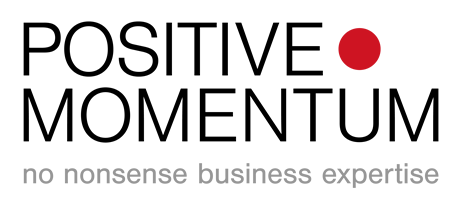ID 209009579 © Shafeek Muhammadali | Dreamstime.com
There are lots of analogies for a team: my two favourites are a band (or orchestra, depending on your musical taste), and a rowing boat.
Both lend themselves well to describing a dysfunctional team: imagine the village band where you can hear every instrument for the wrong reason – like they’re all playing a slightly different version of the same tune; picture two eights on the water, one is perfectly in sync, gliding seemingly effortlessly through the water, while the other looks like a centipede on acid, and it’s a wonder there’s any forward motion at all.
The images are comical, but the reality they illustrate is often far from funny – it’s painful to be part of, stressful for employees and costly for businesses – in a word, toxic.
So let’s look at three causes of toxicity & dysfunction in a team, and the key to curing all of them:
1. Trust banishes hypervigilance
It’s the state of always over-thinking every move, looking over your shoulder, doubting yourself, the motives of others and every action between. This is fight or flight, but not in a single moment, but every minute of every day, inside and outside work.
Stressful, exhausting, and in some cases even deadly.
Hypervigilance can come from a number of places. In the U.S., many employees are engaged ‘at will’ – which means they can be hired, fired, or leave themselves at any moment, with minimal notice or severance. While it might mean ultimate flexibility all round, in a toxic environment, it leaves people thinking that they need to justify their existence at all times, that they’re not doing a job they way it should it should be done, but fighting for their own personal equity.
Even within the supposed security of a contract, employees can tend to hypervigilance under a culture of fear – which in truth comes from being managed either too much or too little.
Under micro-management, there’s no freedom to question, because it’s not allowed, it’s seen as a threat to authority, even though under this perversion of authority, the pre-ordained way could be challenged or optimised.
On the other hand, a vacuum of management can leave team members unclear on goals, purpose, or relevance, or at worst what they’re even supposed to be doing. If you’re afraid to ask questions in these conditions, you don’t, and instead you operate on assumptions. The result, ‘busy’ work, presenteeism, treading water, doing the wrong work in an attempt to fill the void.
Hypervigilance cannot exist in a culture built on trust – when leaders entrust their team with the context behind the imperative, the support when it’s needed, and autonomy the rest of the time; and when team members know exactly what’s expected of them, what their role is in the team along with their colleagues, and when an employee knows it’s OK to ask for support when they need it.
“Ultimately we are trusting each other with our own financial investments, with our futures, with our families’ future ; so you have to trust that circle of people, particularly when you’re the kind of manager/leader that I am, … I give them the flexibility just to get on with it. There’s no point empowering them if you can’t actually trust them.” Joanna Swash – CEO, MoneyPenny. Meet The CEO Podcast
2. Communication builds collaboration and cohesion
If you’re in flight or flight mode, you’ll do whatever it takes to look after yourself at the expense of those around you. (“Save yourselves!”) That’s not a state which lends itself to collaboration or cohesion.
The other big factor behind an absence of collaboration & cohesion is a lack of unity. ‘Being on the same page’ or ‘singing from the same hymn sheet’ are revolting tropes that belong in The Office of Ricky Gervais and Stephen Merchant rather than your own, but, as with all clichés, they are grounded in truth: a shared vision & purpose, communicated consistently. That’s not to say you parrot the same empty words to anyone, regardless of whether they’re listening or not; instead consistent communications is about messaging which adapts to the audience yet fits together coherently, without contradiction.
It’s easier to bring collaboration and cohesion to a single team, but more difficult across a set of teams, albeit no less important.
So how do you get different functional groups working together? Ultimately that rests with the leadership team – a single team at a different level. The exec team must understand not only their own goals but the goals of their peers, and how each feeds the other; and if there are contradictions at this level, they must be resolved, otherwise you’re straight back in centipede-on-acid territory.
“…being hugely focused on output and outcome, and making sure that’s aligned around the business goals, not your own version of the business goals or the functional goals, and tying that up through communications is key.”Jason Ash – CEO, Young Planet. Meet The CEO Podcast. (episode coming up – subscribe so you don’t miss it)
3. Inclusion fosters belonging
A sense of belonging comes from the trust & security of knowing why you have your place in the team. When you know you belong you don’t need to be hyper vigilant; when you know you belong, you are freed to collaborate, and empowered by the cohesion which comes from the belief that those around you are looking out for you as much as for themselves.
We’re building on points 1. & 2., but let’s go further: belonging comes from inclusion, and inclusion is an attitude & set of behaviours which wraps its arms around your whole squad and embraces, nay revels in, the diversity within it.
I had a colleague at Sky News who could always be relied upon in the daily morning editorial meeting to surface a diametrically opposing perspective to the one which currently prevailed. It was the exercise of an intellectual discipline to ensure we looked ‘around’ a story from a multitude of perspectives rather than from one. It’s a practice worth adopting in strategy, product development and any kind of problem solving.
Every individual’s perspective, point of view, and way of thinking is valid because it exists. It doesn’t mean that everyone in the business is the CEO or a department head, but it does mean that the right decisions are made by assimilating the widest possible set of inputs, accepting challenge, and, by the same token, resolution, to move forward as a group. The vast majority of people can reconcile themselves with an alternative outcome as long as they feel they had a chance to be heard.
Trust, communication and inclusion – three antidotes to dysfunction and toxicity in teams. All three rely on each other for their efficacy, but when they work together, they build a working environment which not just kind, compassionate and harmonious, but also energising, resilient, and, crucially, far more effective.
PM24, our diagnostic of organisational health, is launched in Beta. Developed in conjunction with Warwick Business School, PM24 analyses your business across 24 contemporary dimensions, via a 15-minute company-wide survey.











